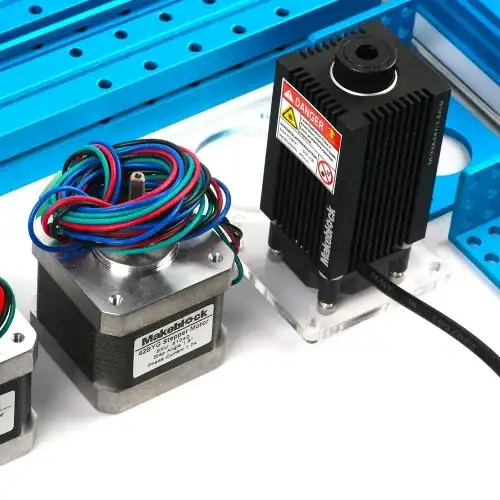A 0.2mm UV beam can easily be kept narrow up to a distance of 1000mm (a meter).
The Wikipedia Gaussian beam page tells you pretty much everything you need to know to think about these kinds of issues. For example, two useful parameters are the Rayleigh distance $z_R$ and beam divergence half angle $eta$:
$$z_R = \frac{\pi\,\mu^2}{2\,\lambda}$$
where $\mu$ is the $1/e^2$ beam diameter at the focus / laser output and
$$\eta = \frac{2\,\lambda}{\pi\,\mu}$$
is the vertex half angle of the cone defined by the $1/e^2$ diameter of the asymptotic farfield.
The Rayleigh distance is the distance the beam must propagate from the focus (laser output) to expand to twice its diameter. For your parameters, assuming a wavelength of 400nm, I make the Rayleigh distance to be 150 meters! So, if your beam is anything approaching a Gaussian beam, you are all set to go.
As in the comments, sometimes cheap lasers can have a great deal of beam aberration, particularly astigmatism. Depending on your application, a way around this is to use two infinite conjugate objectives to focus your laser onto a subresolvable pinhole and recollimated the output. This will give you a perfect, aberration free beam, but you will lose power: the more aberrated the beam, the more you lose. You may have enough power, or you could compensate by choosing a higher power laser. Be mindful of laser safety considerations. You calculate the pinhole size needed as follows. The numerical aperture of the focussing beam is:
$$\eta = \frac{\mu_L}{2\,f}$$
where $f$ is the focal length of the objective and $\mu_L$ the $1/e^2$ laser beam diameter. Don't be distracted by the numerical aperture printed on the objective: the laser sets how full the objective is, so the effective focal length is the pertinent specification. Now, given the numerical aperture, the resolvable diameter is:
$$\mu = \frac{2\,\lambda}{\pi\,\eta} = \frac{4\,\lambda\,f}{\pi\,\mu_L}$$
Choose a pinhole of about 2/3 of this diameter, and use the arrangement I have described to purify the beam.
